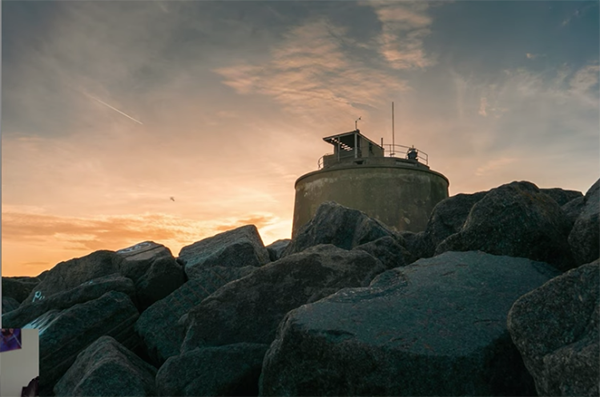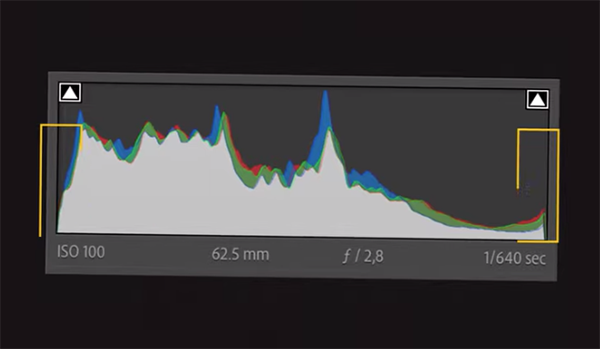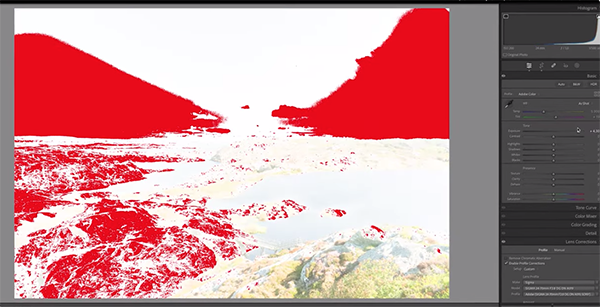A new accessible heat pump just landed in the UK from Sweden – offering monthly payments and zero upfront costs
It aims to take UK homes off gas boilers for good
In the mid-1990s, many designers embarked on the creation of mid-century modern houses. These contemporary designs appeared clean, sophisticated, and could potentially feel misfit in a rural farmhouse or a cabin. However, nowadays, we can observe modern houses that flawlessly merge mid-century patterns with rustic components.
From a modern farmhouse to a mid-century modern log cabin, these two different design styles have been blended together to create a beautiful aesthetic.
If you wish to create your own mid-century rustic look with a modern twist, then read on to find out how you can master the art of combining these different design styles for the perfect modern rustic look.
Here are some tips to achieve the perfect mid-century modern rustic look in your own home:
The color scheme will set the tone for the entire interior design, and when it comes to mid-century modern rustic homes, it is best to stick to neutral colors like white walls, beige accents, as well as tan and grey features.
This neutral color palette will ensure that your home has a sense of calm and harmony and that all the colors will complement each other.
By using these colors on the walls, you can add matching features like neutral mid-century modern furniture with wood accents and indoor plants.

Sticking to a neutral color scheme does not imply that your entire home must be drab. There is still space to use brighter, bolder colors in this design.
Make use of softer colors, like teal or light pink to add personality to the space. These pale colors can be incorporated as throws, rugs, pillows, or as part of the artwork. Indoor plants are also great for adding color to a modern rustic room.
Wood beams and wood mantles are perfectly suited for a modern rustic home.
Rustic design is about incorporating wood tones and natural materials into the space. Wood can be used as flooring, furniture, sculptures, or even the ceiling.
The most important thing to keep in mind when using wood in mid-century modern rustic design is to create a balance. Do not overpower the room with wood features, and make sure to balance modern and rustic elements.
For example, if you are going to use dark wood flooring, then make sure to use modern furnishings. In the dining room, you can use a rustic wooden table, but use light wood or modern dining chairs to blend the two styles together.

Mixing and matching different furniture items, textures and materials are key to blending two styles together. This is a space where you can play around with different elements to strike the perfect balance.
Rustic decor and furnishing are pieces that you would find in a farmhouse or log cabin – heavy, uneven, and cozy. Mid-century modern pieces have minimalistic designs with clean lines.
These two styles seem very distinct from one other, so it may seem tricky to combine them. But, the more you experiment with the two designs, the more you will learn and figure out what works for you.
If your bedroom has a modern bed with straight lines, you can combine it with rustic wooden side tables or a large wooden chest at the foot of the bed. If your kitchen has wood beams, then pare it with modern kitchen counters. A rustic coffee table can be combined with sleek, white couches.
Mixing and matching is the surest way to seamlessly combine mid-century modern and rustic designs.
Mid-century modern interior design is characterized by clean lines and a sleek look. Clean lines are lines that are not broken throughout the architectural design and are not interrupted by other design elements or features.
These lines do not have to be straight, they can be curved and rounded as well. These lines are mostly used in the architecture of the home, however, they can also be found on modern furniture pieces.
Blending these curved lines with rustic elements is easy. You can make use of rustic architectural elements, like an exposed brick fireplace, a stone wall, or wooden supporting beams.
Another way to blend these styles is if the architecture is rustic, while the decor is mid-century modern. For example, a modern farmhouse will have a rustic architecture with wood panels and a more rugged feel, while modern pieces like white furnishings, marble countertops, or a glass table can be used to combine the styles.
Statement pieces are artworks or decor pieces that instantly elevate any room. These pieces stand out and immediately grab your attention, setting the tone for the entire room.
Statement pieces are focal points in any space, and are often used to guide the eye around the room.
A statement piece can be anything you want it to be: a sculpture, a painting, a lighting fixture, or even just a sofa. What you want your statement piece to be will depend on your own taste.
Mid-century artworks are bold and will certainly make a statement. They are mostly geometric or minimalistic, and make use of different textures, like metal and paper.
Combining a statement mid-century modern piece with a rustic touch will be the perfect focal point in any room.
For example, you can place a statement sculpture on a wood mantelpiece, or hang a large modern light over a rustic table. In the bathroom, you can use a claw-footed, freestanding tub and combine it with modern marble countertops or metal cabinets.
The key thing is to make sure your focal piece does not clash with the rest of the design in the room, but rather enhances it and acts as a link between the modern and the rustic designs.
It is all about making a strong first impression without dominating the space.

When you imagine modern design, you may imagine metals, glass, and harsh lines. But, you do not have to sacrifice comfort to achieve the rustic modern look.
The mid-century modern design calls for comfortable, stylish, and cozy furniture. As we have already mentioned, modern furnishings have clean lines and a sleek appearance, but that does not mean it has to be uncomfortable to live with.
Large modern sofas would be perfect for the lounge, as they are comfortable, make a statement, and offer uninterrupted lines. A large modern bed with a rustic wooden headboard will sacrifice neither style nor comfort and is a perfect blend of modern and rustic elements.
Throws, area rugs, a log-burning fireplace, and blankets can also add comfort to any room and make it feel more homey and cozy.
Mid-century art is not only beautiful to look at, but a lot of these artworks are collector’s items. These artworks make a statement, using bold materials that pair well with a more rustic style.
Mid-century artwork can be metal designs, brutalist art pieces, string art or you can even do your own paint-by-numbers art to include in your designs.
Vintage pieces can be coupled with rustic elements, like brutalist artwork on a wood-paneled wall, or an animal skull sculpture hanging over a brick fireplace.

As we have mentioned, mixing and matching pieces go a long way when it comes to mid-century rustic interior design.
You need to be able to combine the two styles without causing any clashes. Keeping it simple and not over-complicating or creating clutter in your design is key.
For example, you can combine a heavy wood dining table with a modern chandelier. Or light wood flooring can be covered by a heavy, rustic rug.
Lights are great ways to bring a modern touch into a rustic room. Wall sconces, chandeliers, standing lights, or table lamps are all easy tools that can be used to bring a modern twist to your otherwise rustic interior design.
If you want a mid-century look in your home, it does not mean you have to use mid-century materials or have a home with mid-century architecture. Mid-century materials are mostly marble, shiny porcelain, and plastic or linoleum.
For a warmer feeling in your home, you should go with more rustic materials, like bricks, wood, and stone. You can then incorporate the modern feeling by using modern design motifs and art pieces to blend the styles together.

Combining mid-century modern design with rustic design does not have to be complicated, although you might think these two styles are in stark contrast with each other.
By following our tips above, you will be able to create the perfect warm, comfortable, yet modern home for you and your family.
Just remember the basics: neutral colors, clean lines, wood tones, and cozy furniture.
The second day of the week is often referred to as Taco Tuesday, but Shutterbug readers know it’s also Tutorial Tuesday when we often post the weekly lessons from Park Cameras—one of the leading photo retailers in the UK. This episode explains the difference between Vibrance and Saturation sliders, so you’ll understand when and how to put these simple sliders to use.
This demonstration takes place in Lightroom, but everything you’ll learn is equally applicable when processing images in Photoshop, Capture One, or just about any editing software you use. As you’ll see, Vibrance and Saturation adjustments work in similar ways but the difference is significant. And the choice you make depends both on the specific image you’re working on and the enhancements you have in mind.
Photographer Gareth Evans is today’s exuberant instructor, and his lessons are just as entertaining as they are informative. He kicks off the video like this: “The difference between Vibrance and Saturation is subtle, but it can also be quite meaningful in terms of how to decide to edit a photo.”

Evan uses a variety of images to illustrate the distinction between these important tools and how they affect different types of photos in different ways. His first example is a very colorful portrait with an intense red background, while other shots exemplify scenes in which colors aren’t intended to pop of the screen.
The portrait is a good place to start because it’s important to maintain clean and realistic skin tones while enhancing other tones with the shot. Evans explains that Saturation is the most straightforward slide because it affects all colors equally when pumping up a shot. His point is that saturated skin tones is rarely your goal when editing portrait photos.
Lightroom’s Vibrance slider, on the other hand, “is a little bit more subtle and natural in the way it increases saturation of colors.” That’s because this tool “specifically focuses on colors in the midtones.” The “more gentle” Vibrance tool also tends to boost less-saturated colors first, before pumping up more intense colors in an image.

Thus, Vibrance is generally a better to choose when skin tones are part of the equation. He provides a clear demonstration of how all this works when your goal is a “less aggressive” enhancement.
Of course, there are other types of photos for which the Lightroom’s Saturation tool is exactly what you want—especially for adjusting photos that were captured on dull days with flat light. Evans show you how to make these types of adjustments, and why the Vibrance tool is far less effective in situations like this.
The Park Cameras YouTube channel is well worth a visit, because there’s a wide-array of shooting and editing videos from which to choose that will greatly help you up your game.
And be sure to check out the tutorial we posted earlier from another great instructor who explains how to create pro-quality b&w images with a little help from Lightroom.
If you’re not paying attention to the histogram when processing images in Lightroom, well, shame on you. That’s because this powerful tool will simplify your workflow and help you achieve far better edits.
It’s unusual to find a four-minute tutorial that helps unlock Lightroom’s full potential, but that’s exactly what you’ll find in this eye-opening lesson from German photographer Maike Born. She provides a step-by-step guide for using the histogram to elevate your post-processing skills and quickly achieve stunning results.
This episode covers everything you need to know from how to interpret and manipulate histograms, adjusting exposure, and using the histogram to achieve optimum color balance. In short, it’s all about creating an ideal distribution of tones within every image you capture.

Born illustrates how keeping a close eye on the histogram enables you to evaluate and adjust shadows, midtones, and highlights in a photo. She put it like this: “In practical terms, the left side of the histogram corresponds with shadows, namely the dark areas that capture depth and dimension.”
Conversely, the right side of the histogram represents highlights to help you modify bright elements in an image to bring attention and enhance details to these areas within the frame. As you may suspect, the middle of the histogram pertains to midtones and contributes to the visual harmony of the photograph.
The bottom line is this: Lightroom’s histogram functions as a visual roadmap for evaluating the tones in an image to help you identify and correct any potential problems. Born demonstrates how peaks and valleys within this straightforward tool provide great insight into the distribution of tones, “allowing you to make informed decisions during the editing process.”

In basic terms, the histogram reveals three essential components of the image at hand: namely clipping, exposure and contrast. You’re no doubt familiar with the terms exposure and contrast, but what about clipping? As Born explains, this refers to the loss of detail due to underexposure and over exposure.
The “crucial” goal is to achieve optimum detail, contrast, and color balance in all tones throughout an entire image, and thanks to the histogram this task is easy to achieve. Just follow Born’s advice and add these techniques to your Lightroom workflow today.
After watching this video pay a visit to Born’s instructional YouTube channel where you’ll find a variety of straightforward tips for improving the look of your photographs.
And on a related note, check out an earlier tutorial we posted with another image-editing expert who explains an easy and effective Lightroom hack for rehabilitating landscape photographs with bad color.
Here’s the link to Born’s video
